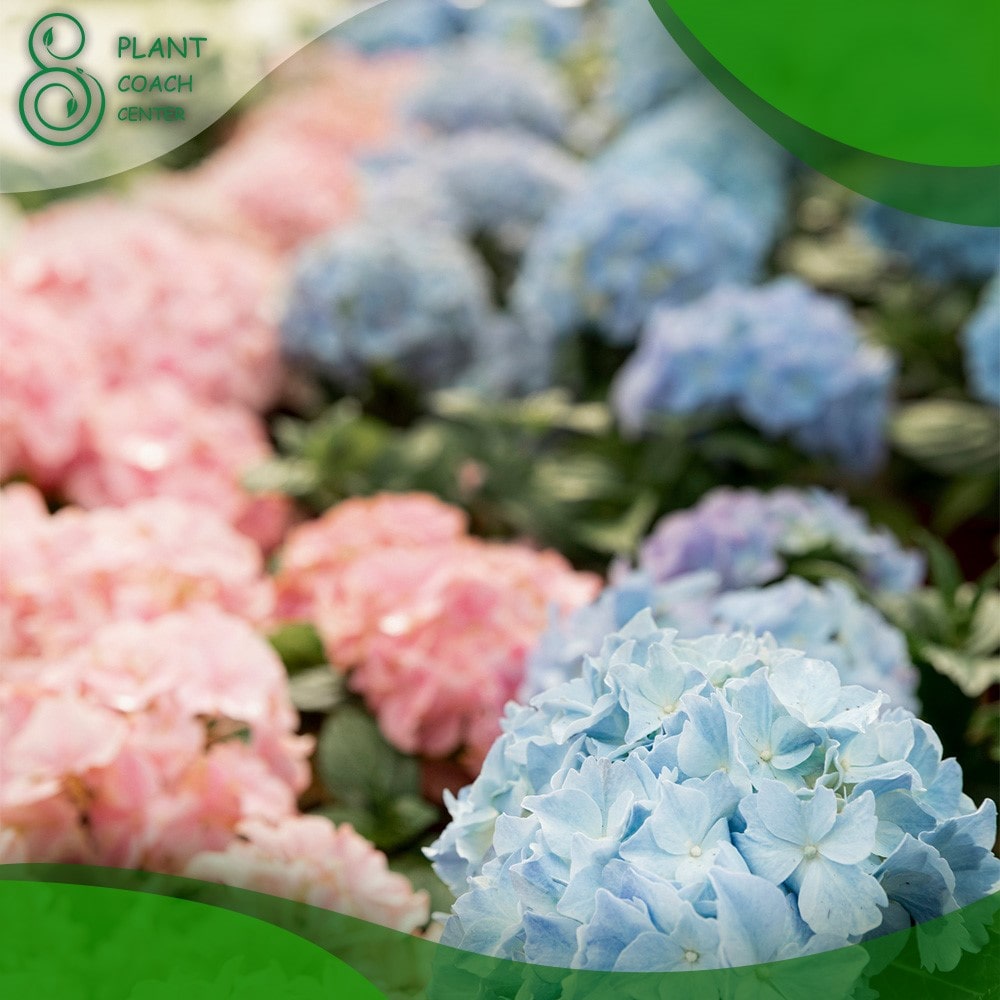When Can You Transplant Hydrangeas?
Welcome to plantCouchCenter.com’s gardening blog! If you’re a passionate gardener, a floral enthusiast, or someone seeking to enhance the beauty of your outdoor SpaceSpace, you’ve come to the right place. This article delves into the enchanting world of hydrangeas and the art of transplantation. Hydrangeas have become a beloved addition to gardens worldwide with their striking blooms and vibrant hues.
However, whether you’re expanding your garden, relocating, or simply wishing to optimize your hydrangea’s growth, understanding the ideal Timing and techniques for transplanting these magnificent shrubs is crucial. Join us as we explore the six creative subtopics that will guide you through transplanting hydrangeas with confidence and finesse.
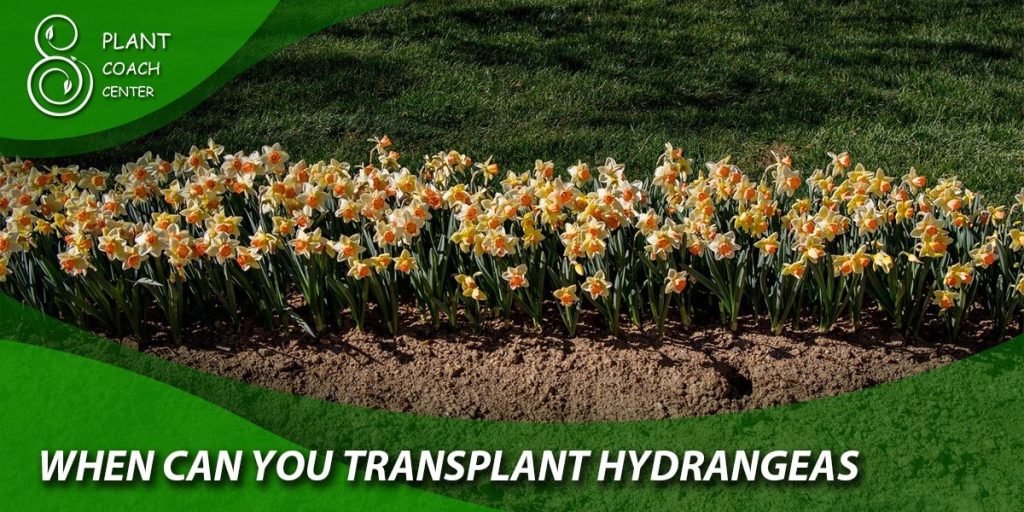
From selecting the perfect location to nurturing new roots, we’ll provide expert insights and practical tips to ensure a seamless and successful transplant. So, roll up your sleeves, grab your gardening tools, and embark on this horticultural journey together, uncovering the secrets of transplanting hydrangeas to elevate your garden to new heights!
Seasonal Symphony: The Best Time to Transplant Hydrangeas
Transplanting hydrangeas is an exciting endeavor to breathe new life into your garden and revitalize the landscape. To ensure a successful transplantation, Timing plays a vital role. Hydrangeas are hardy plants, but they require careful consideration for relocation.
The best time to transplant these enchanting shrubs largely depends on the region’s climate and the specific variety of hydrangea you have. Generally, the optimal time to undertake this task is during the plant’s dormant season, which typically falls in late winter or early spring.
Late Winter Transplantation
In regions with mild winters, late winter, before new growth emerges, presents an ideal window for transplanting hydrangeas. This Timing allows the shrub to establish its roots in the new location before the growing season begins. It’s crucial to avoid extreme cold spells during this period, as frost can damage the exposed roots.
Early Spring Transplantation
For areas that experience harsh winters, early spring, just as the last frost passes, offers a suitable alternative for transplanting hydrangeas. Waiting until the danger of frost has subsided ensures the plant won’t be shocked by sudden temperature drops. This timeframe still allows ample time for the hydrangea to acclimate to its new environment and encourages robust growth.
Autumn Transplantation
Some gardeners transplant hydrangeas in the fall once the summer heat wanes. Autumn offers cooler temperatures, which reduce stress on the plant during transplantation. However, remember that this Timing might not be suitable for all hydrangea varieties, as some may need more time to establish robust root systems before winter sets in.
Final Tips
Regardless of the chosen season, proper preparation is critical to successful transplantation. Before digging up your hydrangea, water the plant thoroughly a day or two in advance to ensure it’s well-hydrated. Choose a new location that receives the right amount of sunlight and provides adequate SpaceSpace for the plant’s mature size.
Gently dig around the plant’s root ball to minimize damage and transplant it to the new hole at the same depth previously planted. Water the transplanted hydrangea generously, and consider applying mulch to retain moisture and protect the roots during the adjustment period.
Garden Relocation: Picking the Perfect Spot for Your Hydrangeas
As you transplant your hydrangeas, selecting the right spot in your garden is akin to choosing a stage for a grand performance. Your chosen location will significantly impact the plant’s growth, health, and visual appeal. To ensure your hydrangeas thrive in their new home, consider the following factors when picking the perfect spot for these stunning shrubs.
Sunlight Requirements
Hydrangeas are known for their diverse range of varieties, each with unique sunlight preferences. Some prefer full sun, basking in at least six hours of direct sunlight, while others thrive in partial shade, shielded from the intense midday rays. Before transplanting, identify your specific variety and select a spot in your garden that aligns with its sunlight requirements.
Soil Conditions
Well-draining soil with a slightly acidic to neutral pH is the key to healthy hydrangea growth. Conduct a soil test in the area you’re considering relocation to ensure it meets these requirements. Amending the soil with organic matter, such as compost, can help improve its drainage and nutrient content, providing a solid foundation for your hydrangeas to flourish.
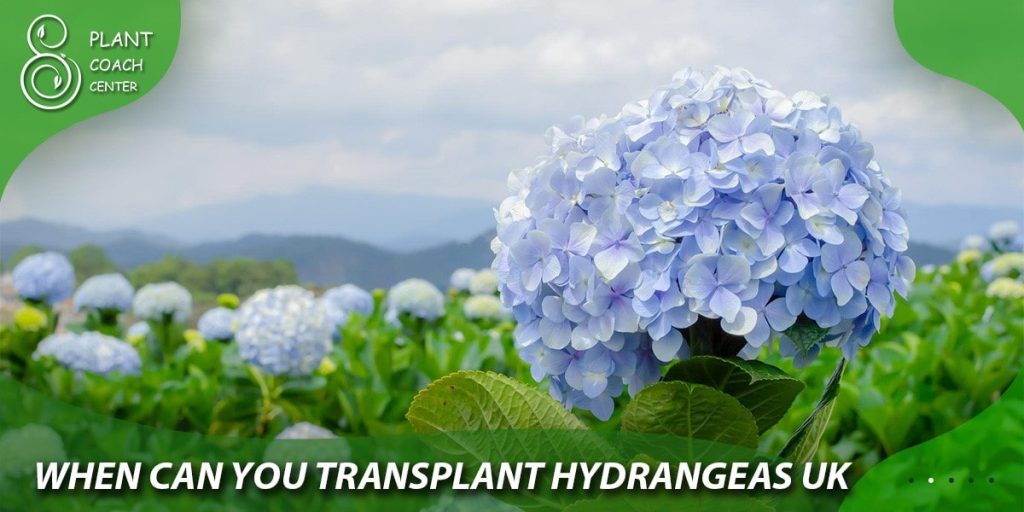
Adequate Space
Hydrangeas are known for their lush foliage and stunning blooms, and they require ample Space to spread their roots and branches. Avoid crowding them among other plants, leading to resource competition and hindering their growth. A spacious location will provide the necessary room for growth and enhance the visual impact of these magnificent shrubs.
Protection from Harsh Elements
Consider the prevailing weather patterns in your area when choosing the transplant location. Hydrangeas can be sensitive to strong winds, so it’s beneficial to position them near a natural windbreak, such as a fence or larger shrubs. This protection will prevent damage to delicate branches and flowers during storms or gusty weather.
Aesthetic Harmony
The beauty of hydrangeas lies not only in their blooms but also in their foliage and overall appearance. When selecting the transplant site, envision how the hydrangeas will complement the surrounding landscape and other garden elements. Pay attention to color schemes, shapes, and textures to create a visually pleasing arrangement that enhances the overall appeal of your garden.
Accessibility for Care
Lastly, consider the accessibility of the chosen spot for regular maintenance and Care. Transplanted hydrangeas require consistent Watering, especially during their initial establishment period. Ensuring easy access to water for the plants and applying necessary fertilizers or treatments will contribute to their long-term health and vibrancy.
Secrets of Success: Preparing Your Hydrangeas for Transplanting
Transplanting hydrangeas may seem daunting, but with the proper preparation, you can set the stage for a successful and seamless transition. These beautiful shrubs, known for their captivating blooms and lush foliage, deserve special attention during this process to ensure their health and vitality are maintained. Here are the secrets to preparing your hydrangeas for transplantation:
Prune with Precision
Before you begin the transplanting process, it’s essential to prune your hydrangeas. Pruning helps maintain the plant’s shape and reduces stress during transplantation by minimizing the amount of foliage the plant needs to support. Remove any dead or diseased branches and any excessive growth to promote better air circulation and healthy regrowth.
Water Wisely
Hydrangeas thrive in well-hydrated soil, and proper Watering is crucial in preparing them for the big move. Ensure the plants are adequately watered in the days leading up to the transplantation. Well-hydrated hydrangeas are better equipped to handle the stress of uprooting and have a higher chance of successfully establishing themselves in their new location.
Digging the Right Way
When it’s time to dig up your hydrangeas, approach the task with Care. Using a sharp spade to dig around the plant creates a broad and deep root ball. Aim to minimize root damage during excavation, as a healthy root system is vital for the plant’s survival post-transplantation.
Consider Root Pruning
For more enormous, more established hydrangeas, root pruning can be beneficial in encouraging new feeder roots to grow near the root ball’s base. This process can be done a few months before the planned transplantation and helps the plant develop a compact and sturdy root system, which aids in better nutrient absorption and water uptake.
Plan the Timing
As previously mentioned, Timing is critical when transplanting hydrangeas. Choose a day that aligns with the dormant season, either in late winter or early spring, to minimize the shock of transplantation and maximize the chances of successful root establishment.
Adequate Aftercare
After transplanting your hydrangeas, take into account the importance of proper Aftercare. Water the plants regularly, especially during the initial weeks, to support root growth and prevent wilting. Applying a layer of mulch around the base can help retain moisture and regulate soil temperature.
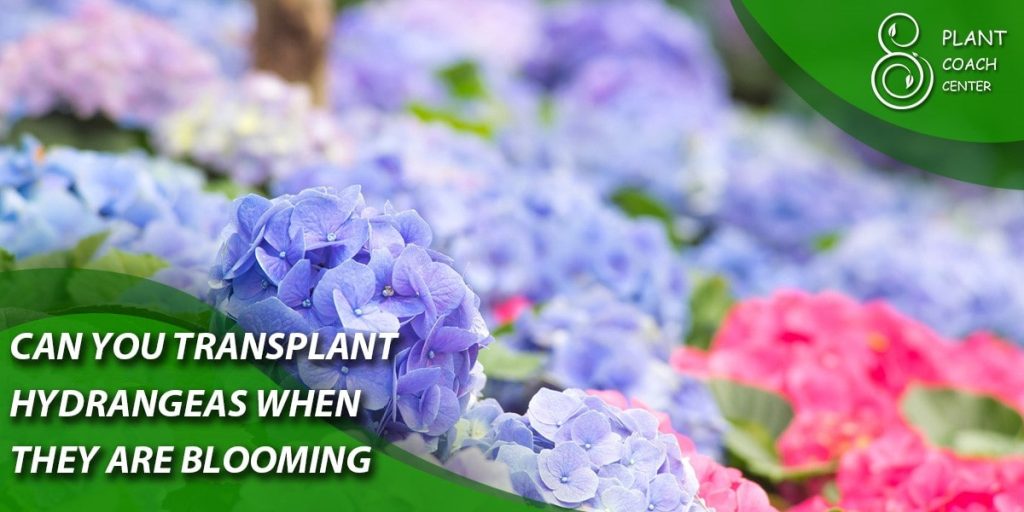
Weathering the Change: How to Transplant Hydrangeas in Challenging Climates
Transplanting hydrangeas can be a rewarding experience, but it comes with challenges, especially in regions with extreme climates. Whether you’re facing scorching summers, frigid winters, or both, taking special precautions is essential to ensure your hydrangeas adapt and thrive in their new environment. Here are some valuable tips on how to transplant hydrangeas in challenging climates:
Choose Hardy Varieties
If you’re in a climate known for its harsh weather conditions, consider selecting more resilient hydrangea varieties. Some varieties, such as the panicle hydrangea (Hydrangea paniculata) and the oakleaf hydrangea (Hydrangea quercifolia), are better equipped to handle cold and hot climates. Research the best hydrangea varieties for your specific climate zone before transplantation.
Time it Right
Timing is crucial in challenging climates. Avoid transplanting during the peak of extreme weather, such as the hottest days of summer or the coldest days of winter. Aim for periods of milder weather, such as late spring or early fall, when temperatures are more moderate. This will give your hydrangeas the best chance to adjust to their new surroundings without stress.
Provide Shade and Shelter
In scorching climates, hydrangeas can benefit from partial shade to protect them from intense sunlight during the hottest parts of the day. Plant them near larger shrubs or trees that can act as natural shade providers. Additionally, consider installing temporary shade cloth or using umbrellas to shield the plants during the initial days after transplantation.
Shield from Frost and Wind
For regions with cold winters, protect your hydrangeas from frost and harsh winds. Applying a thick layer of mulch around the base of the plants can help insulate the roots and protect them from freezing temperatures. Consider using burlap or frost cloth to cover the shrubs during freezing nights, providing an extra layer of protection.
Watering Management
In both hot and cold climates, proper Watering is essential. Hydrangeas may require more frequent Watering in hot climates, especially during dry spells, to prevent wilting and stress. In cold climates, ensure the plants are well-hydrated before the ground freezes to prevent winter dehydration. Avoid watering during freezing temperatures, as this can cause ice to form around the roots.
Patience and Observation
Transplanting hydrangeas in challenging climates demands patience and careful observation. Keep a close eye on the plants’ condition and adjust your care regimen accordingly. Be prepared to make additional efforts to protect your hydrangeas during adverse weather conditions and give them the time they need to acclimate to their new home.
Nurturing New Roots: Caring for Transplanted Hydrangeas in the Early Days
Congratulations on successfully transplanting your hydrangeas! The hard work is still ongoing, as the initial days after transplantation are critical for ensuring the plants’ healthy establishment and growth in their new location. Nurturing the unexplored roots of your transplanted hydrangeas requires special Care and attention. Here’s a guide on how to care for your transplanted hydrangeas in the early days:
Watering with Care
Water is the lifeblood of your transplanted hydrangeas, and adequate hydration is essential during the early days. Keep the soil consistently moist, but avoid overwatering, as standing water can lead to root rot. Monitor the soil moisture regularly and adjust your watering schedule based on the weather conditions and the specific needs of the hydrangeas.
Mulching for Moisture and Insulation
Mulching is a valuable practice to help your transplanted hydrangeas retain moisture and maintain stable soil temperature. Apply a layer of organic mulch, such as wood chips or compost, around the base of the plants, leaving a gap around the stems. Mulch will also help suppress weeds that could compete for nutrients and water.
Protection from Extreme Weather
During the early days after transplantation, your hydrangeas are more susceptible to stress caused by extreme weather conditions. Consider providing shade during the hottest parts of the day in hot climates to prevent wilting. In cold climates, use frost cloth or burlap to shield the plants from freezing temperatures and harsh winds.
Fertilization with Caution
Avoid applying heavy doses of fertilizer immediately after transplanting your hydrangeas. The plants focus on root establishment; excess nutrients can stress their delicate root systems. Instead, wait a few weeks before introducing a balanced fertilizer, and follow the manufacturer’s instructions for application.
Pruning and Deadheading
In the early days after transplantation, avoiding pruning or deadheading your hydrangeas is best. Allow the plants to channel their energy towards establishing solid roots and adapting to the new environment. You can resume regular pruning and deadheading once the hydrangeas have settled and started to thrive.
Regular Monitoring
Pay close attention to your transplanted hydrangeas during the early days. Observe their foliage for signs of stress, such as wilting or discoloration, and take prompt action if any issues arise. Timely intervention can make a significant difference in their recovery and overall health.
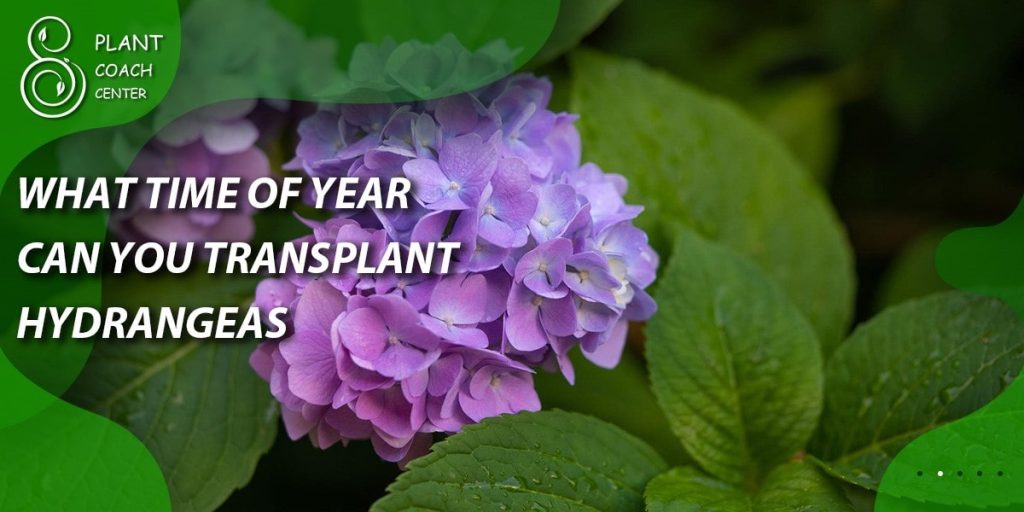
Transplant Troubleshooting: Common Mistakes to Avoid When Moving Hydrangeas
Transplanting hydrangeas can be a gratifying experience, but it also requires careful planning and execution to ensure the best chances of success. Avoiding common pitfalls is essential to prevent undue stress on the plants and to help them establish themselves in their new location. Let’s explore some common mistakes to avoid when moving hydrangeas:
Improper Timing
Transplanting hydrangeas at the wrong time can lead to shock and hinder their ability to adapt. Avoid moving them during the peak of the growing season or when extreme weather conditions are expected. Instead, opt for the dormant season, typically late winter or early spring, when the plants are not actively growing.
Neglecting Watering
Proper Watering is crucial during and after transplantation. Failing to water adequately during the process can lead to dehydration and stress. Once transplanted, consistent and adequate Watering is essential for root establishment. On the other hand, overwatering can cause root rot and other issues. Strike a balance and monitor soil moisture regularly.
Insufficient Root Ball Size
A small and shallow root ball can result in significant root damage during transplantation. Dig a broad and deep enough hole around the hydrangea to minimize root disturbance. A giant root ball gives the plant more intact roots, increasing the chances of successful establishment.
Incorrect Planting Depth
Planting hydrangeas too deep or too shallow can affect their health and growth. When transplanting, ensure that the top of the root ball is level with the ground surface. Planting too deep can suffocate the roots while planting too shallow can expose them to extreme temperatures and stress.
Fertilizing Too Soon
Resist the temptation to fertilize your transplanted hydrangeas immediately. The plants need time to focus on root establishment before efficiently absorbing nutrients. Applying fertilizer too soon can overwhelm the fragile root system and lead to nutrient imbalances.
Ignoring Post-Transplant Care
Once you’ve successfully transplanted your hydrangeas, continue providing Care and attention during the critical adjustment period. Monitor the plants for signs of stress, pests, or diseases, and take appropriate action promptly. Proper Aftercare ensures the plants have the support they need to flourish in their new environment.
Conclusion
In conclusion, transplanting hydrangeas is a rewarding journey that demands thoughtful planning, meticulous Care, and an appreciation for the resilience of these enchanting shrubs. By understanding the best Timing for transplantation, carefully selecting the perfect spot, and nurturing the new roots with attentive Aftercare, gardeners can ensure the successful establishment and flourishing growth of their transplanted hydrangeas.
Avoiding common mistakes, such as improper Timing, neglecting Watering, and improper planting depth, will further enhance the chances of success. As you embark on this horticultural adventure, remember that the process requires patience and dedication, but the rewards are well worth it. By following the expert insights and practical tips provided here, sourced from the gardening experts at Plantcouchcenter.com, you can create a symphony of beauty in your garden, harmonized by the resplendent hues and captivating blooms of your cherished hydrangeas. Happy gardening!
Can I transplant hydrangeas in the summer?
It's generally not recommended to transplant hydrangeas during the hot summer. Transplant for the best results during the dormant season, in late winter or early spring.
How much water do transplanted hydrangeas need?
Transplanted hydrangeas need consistent moisture. Water them regularly, keeping the soil moist but not waterlogged.
Can I prune hydrangeas before transplanting?
Yes, pruning before transplanting is advisable. Trim back dead or diseased branches and excess growth to reduce stress during transplantation.


